Author: jcook19
Jacob Cook Presentation
PRY
Part 1’s five chapters are multimedia dreamscapes that tell the story of James, a demolition consultant six years out from his return from the first Gulf War. He’s slowly going blind, and he’s an unreliable narrator; those factors affect the way the story unfolds. The narrative is fragmented, the visuals atmospheric: Charlie Kaufman by way of an acid trip. Pry is greater than the sum of its parts. Multimedia content isn’t just embedded and integrated. It incorporates the iPad’s haptic gestures: the pinch, the drag and the pry.
Chapter 1 opens with two lines of white text on a black background. Readers can pry — yes, that word again — those open into four lines of still-coherent text. Repeat the gesture above and below any line: Text expands until it reveals video footage, delving deeper into the main character’s psyche.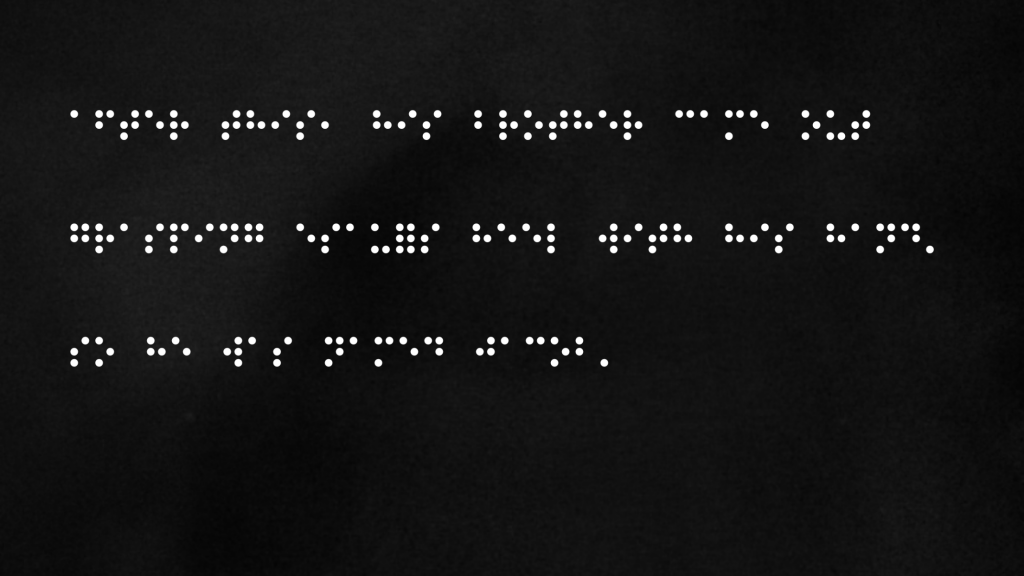
“The storyline transitions back and forth from the perspective of the main character, James, a veteran from the Gulf War six years later, and the perspective of the reader. With sometimes smooth, and sometimes jolting, disorientating flashbacks between the past and present, interspersed with video clips, rapidly flashing sets of words, and audio make Pry constantly moving, and kinesthetic, stimulating.”

I think that the mechanic of the story is a real unique way to progress throughout the story by having us to swipe or touch or pinch and I thought that was a good change into the storytelling part of the piece. The story itself, to me, was lacking in a way that it didn’t really pull me into the story. I didn’t feel like I wanted to continue reading other than to see how to progress in the story.
Source:
PRY Review – “https://diglit.community.uaf.edu/tag/pry-a-novella/”
Expanded Cinema, Virtual Reality and Augmented Reality

I’ve read through Scott Rettburgs chapter on Divergent Streams and, I have got to say, that the from that really sticks out to me would have to be “Expanded Cinema, Virtual Reality, and Augmented Reality.” The reason why I felt like that one seemed the most interesting to me is because I have always been the guy that’s fascinated buy tech that can put us into another place without even having to leave your own home. I never thought that we could live in an era that Virtual Reality would be a possibility, you would be able to truly experience the fictional world for yourself by truly being the main protagonist and going onto an adventure that you’ve always wanted to go on when you where just a kid.
“3D or even “4D” cinema experiences are now commonplace. In a somewhat humbler way, expanded cinema has also crossed over into electronic literature, as a number of writers and artists have produced works that apply techniques and approaches common in electronic literature in the construction of cinematic experiences.”
This explains that even things like Virtual Reality and Augmented Reality as well as Expanded Cinema can work, fantastically, in electronic literature by telling us a story and having to choose your own path or, in Augmented Reality case, play Pokémon Go because It is a great example of Augmented reality which is adding a virtual feature inside of the real world and you progress by catching Pokémon and leveling them up but in order to achieve said goal, you are going to have to actually walk around town which, I think, is an amazing mechanic.
Network Writing

So the work that I am doing a blog on for this week is the work “I Love Alaska.” I chose to do this piece of work because I felt like it was very interesting. Although it wasn’t really the best work that I have came across, it was something that, truly, caught my attention. The story is simple yet intriguing.
“I love Alaska tells the story of one of those AOL users. We get to know a religious middle-aged woman from Houston, Texas, who spends her days at home behind her TV and computer. Her unique style of phrasing combined with her putting her ideas, convictions and obsessions into AOL’s search engine, turn her personal story into a disconcerting novel of sorts.”
“August 4, 2006, the personal search queries of 650,000 AOL (America Online) users accidentally ended up on the Internet, for all to see. These search queries were entered in AOL’s search engine over a three-month period.”
It sounds like the story is told with a series of search queries that was searched that started, from the looks of it, in the beginning of March all the way to almost the middle of August.
“After three days AOL realized their blunder and removed the data from their site, but the sensitive private data had already leaked to several other sites.”
The real reason why this has caught my attention is do to the fact of how secure our internet really is and how, almost, anything that you put on the internet is not 100% safe and secure.
Sources:
- “I Love Alaska – Episode 1/13”: https://vimeo.com/2893100
- “I Love Alaska – Episode 13/13”: https://vimeo.com/2990727
Multimedia Fiction
In this weeks Blog we dive into a few contents that focuses on multimedia fiction as well as multilinear storytelling. We have to choose 2 – 3 of them and go in depth with what they represent. The 2 pieces of content that I choose to write about was “Lost of Grasp” and “Film Text”. I choose those 2 stories specifically because I felt like they are the ones that really stood out from the rest in terms of design and overall content.
The first story that I choose, “Lost of Grasp”, was very interesting. The story starts us off with a flash animated introduction then cuts us to a desert landscape where we are free to then choose how we want to progress with the story. I really felt immersed in this piece of content because I felt it was really well put together and it doesn’t demand to much with how fast we want to know with the story.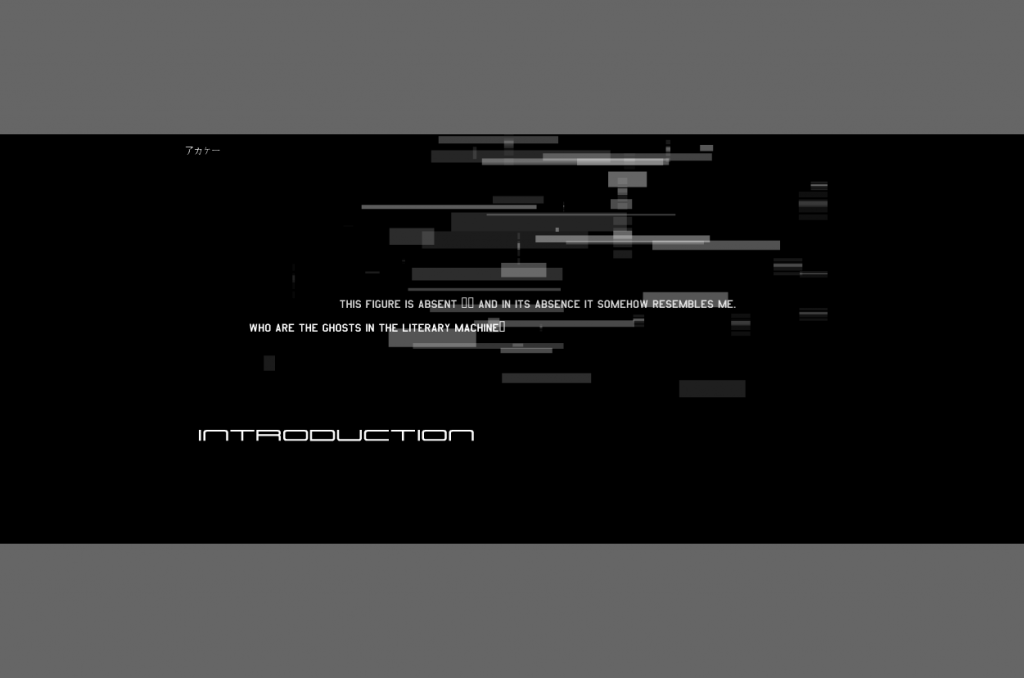
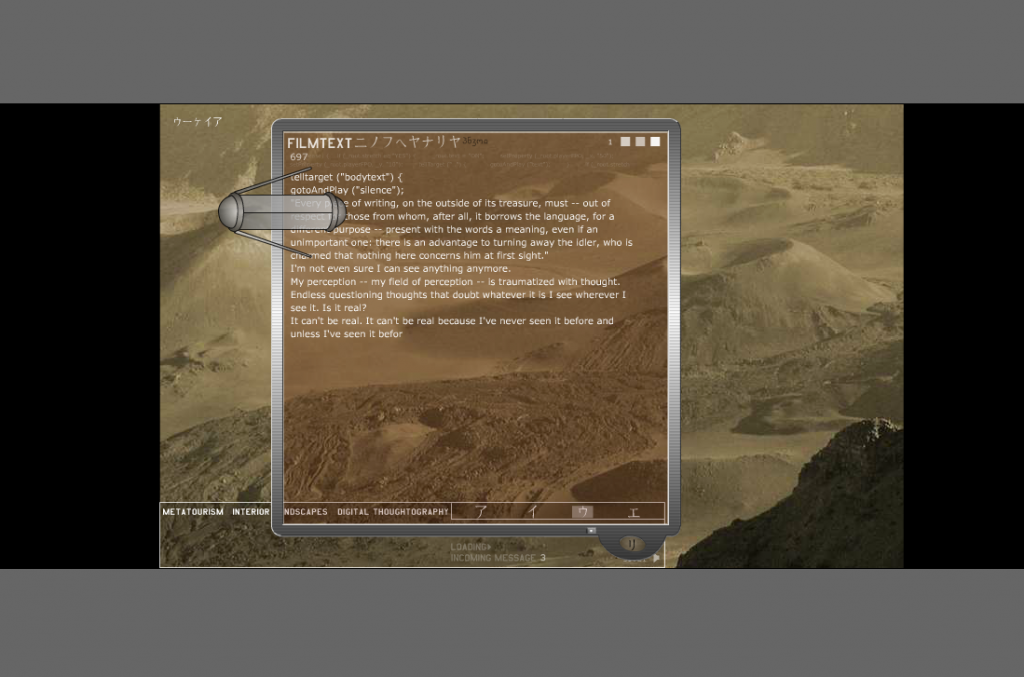
The second story that I choose which was “Film Text” was a little weird but in a way that really made you focus on the story to really get an understanding of what it all means. Like for example, the son talking about how he doesn’t have a hero because he doesn’t really favor a life more than the previous life but then we where able to mess with the wording a little bit by clicking on a specific part of the paragraph and hearing him say things like, “I don’t love you”, “You’re not a modal for me” and I believe that this is what the father is hearing because, I believe, that all he wanted is for someone to look up to him but sense his son really doesn’t look up to anyone the father believes that the son doesn’t really love him.
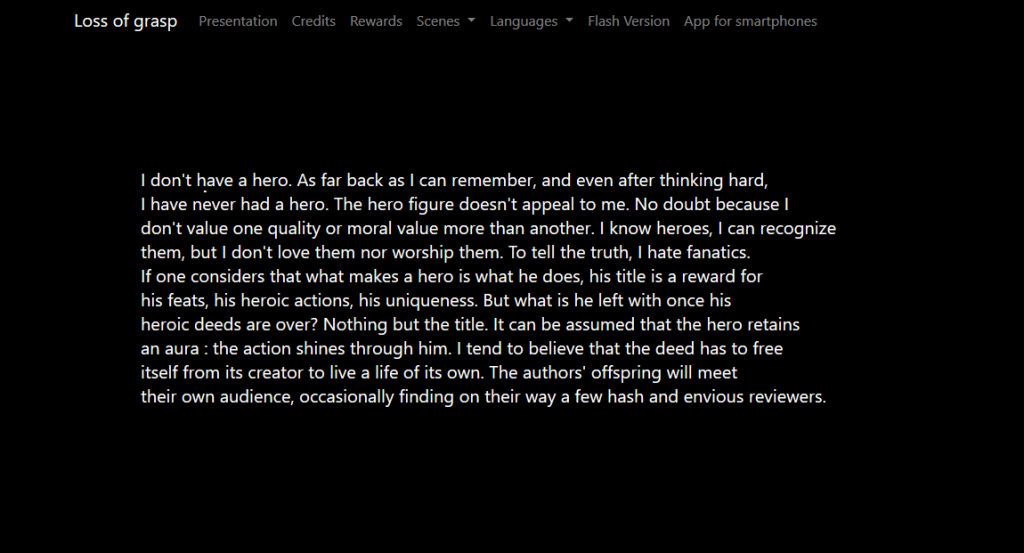
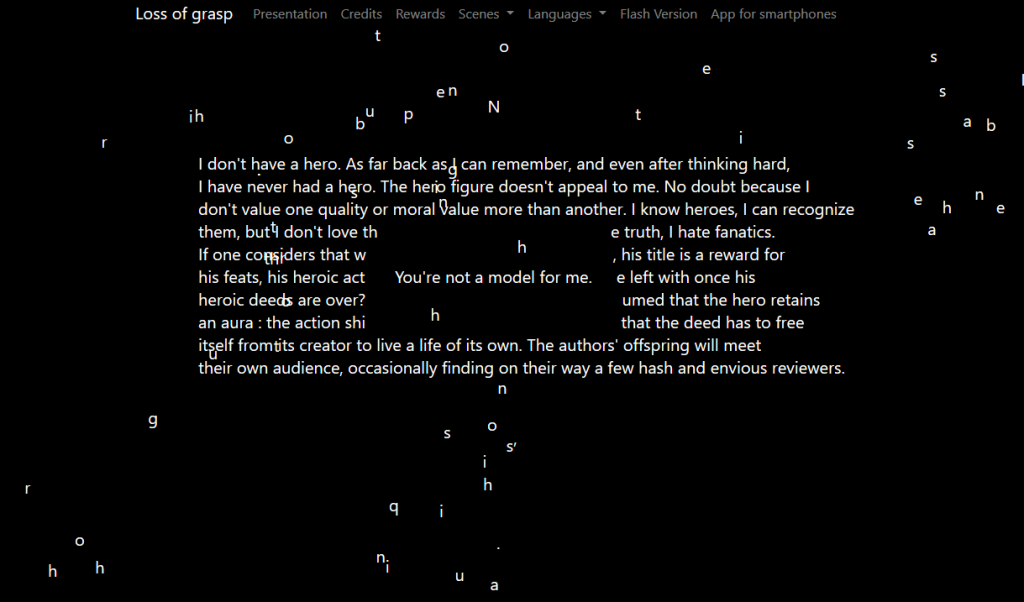
Kinetic and Interactive Poetry
The first piece of poetry, that I read, that I found to have stood out was Stephanie Strickland’s “The Ballad of Soot and Sand.” I found the poem to be amusing in a way that it shows how different-colored texts can show more meaning to the poem than others. It also shows progression in a way that you feel peeks your interest with how you feel. It can also show us that multilinear can work on a much deeper level and more than just games but you can also read poetry with choices. the multi-color effect also gives people a sort of what is what, like the topics of being discussed in the panel and the corresponding picture that is shown and how they are sort of similar.
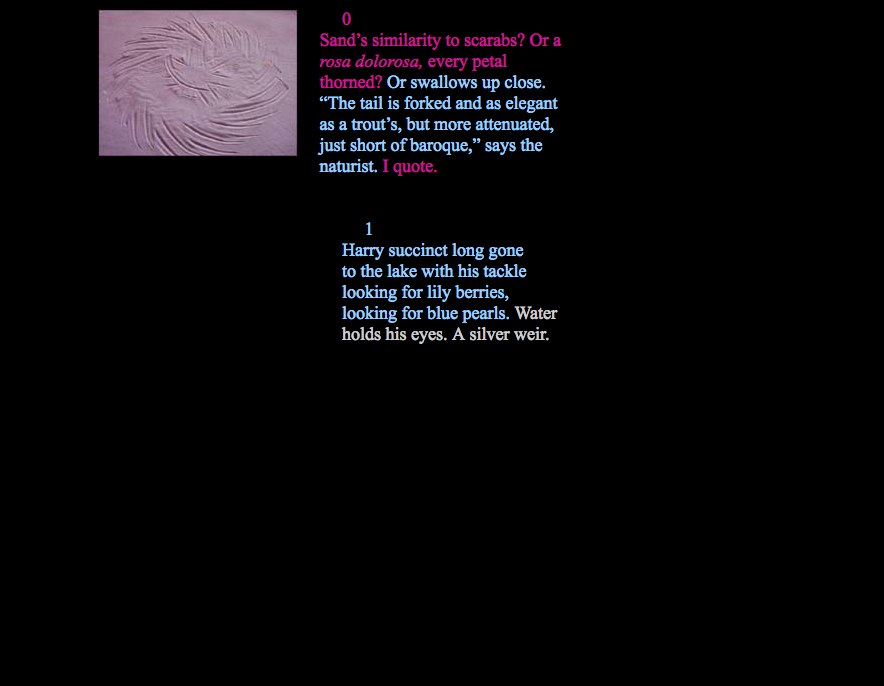
Another poem that I found to be very interesting is Brian Kim Stefan’s “The Dreamlife of Letters.” I liked the poem because it did something that I think is a good addition to Kinetic poetry and that is “Visual Poetry” for people who don’t necessarily like to just read with their eyes but see what the action of the words within the poem itself.
“Considering the relation between writing and technology, visual poet Derek Beaulieu writes that he proposes a poetic where the author-function is fulfilled both by the biological ‘author’ of the text and the technology by which it is created” (Beaulieu, 2012, p. 74)
This tells me that authors and poets alike wants to show a different way of telling stories to readers by having them to be shown.
Interactive Fiction & Narrative Games
Some of these games I felt where really enjoyable in their own way but the two games that really stood out to me would be “Game, Game, Game, and Again Game” and “Howling Dogs”, both giving up deep meaning to each activity we make from within the game though.
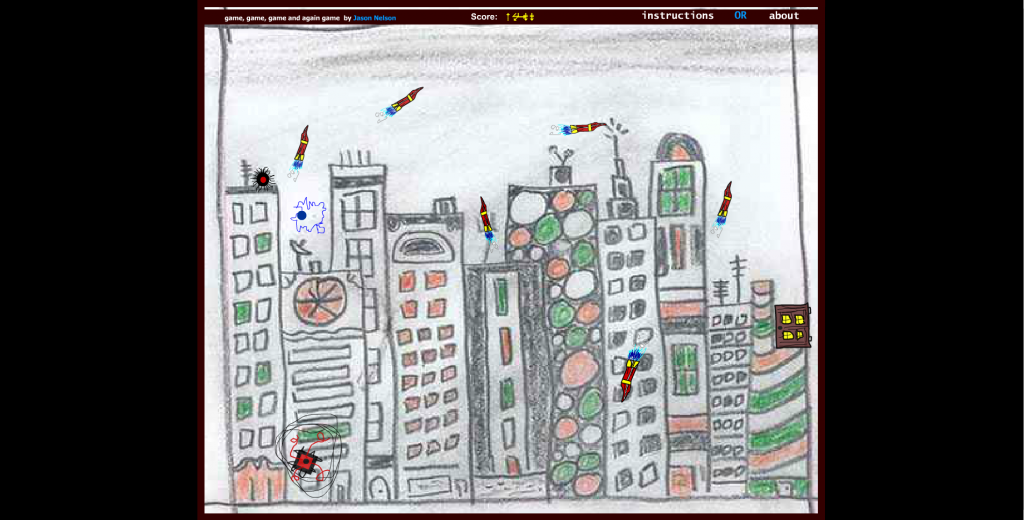
Game, Game, Game, and Again Game is this interactive, side scrolling platform game that immerses you into a world of random stuff that happens when you collect items that are wildly spasming out all over the level and when you collect one it gives you, what I think, are riddles as well as little music clips of his life throughout the years.

As you can see. Depending on the items in which you collect can give you more to receive as you progress throughout the game which is what I really like about it is that in order to get more information you would have to progress and work for it.
Howling Dogs, on the other hand is quite a bit different than the other. Howling Dogs is more of a Narrative Game than it is an Interactive Fiction. The game starts you in a room that gives you several room to choose to go in and “explore” and depending on your action will see if you progress further or circle back to the room you start in. I like it because it’s a more settle game than Gamesx4 and instead of your characters actions being tracked it’s YOUR actions. These games try to see what YOU would do in these situations. It was a real daring experience for me.
Sources:
Image capture is “Game, Game, Game, and Again Game”
My Boyfriend Came Back from the War
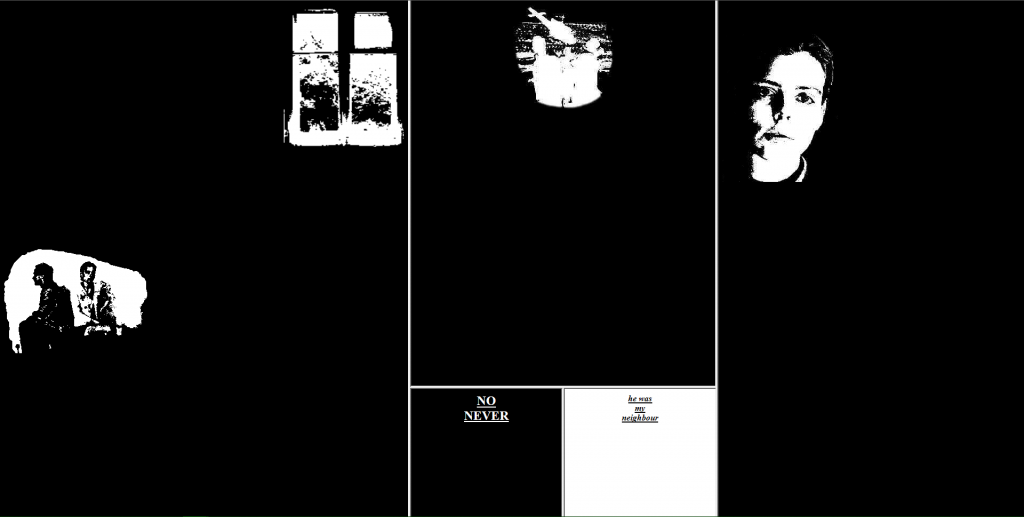
I chose to go more in depth with the work “My Boyfriend Came Back from the War” because it seemed to have peaked my interest the most and I’m glad that I read it. It’s just a simple story by Olia Lialina and supplies a lot of the HTML elements to it. The story is told through the narrative of two individuals, the girlfriend and the boyfriend and it’s about the two lovers reuniting after the boyfriend came back from the war. The story uses, what looks like to be, old school pictures and still images to tell the story as well as a kind of multilinear structure that when you press on a fragment it splits in half and gives us two choices on what we want to do in that situation.
“Lialina aptly uses the web to interrogate our understandings of the production and organization of memory, a question that structures her practice to this day. In keeping with this, she considers the numerous artistic remakes and remixes of the piece an extension of her initial investigation.”
I felt like the story taught us that even with an incomplete story you can still finish it, just opening you imagination and open your interpretation on the story piece. The themes that I found behind this work was really intriguing. I saw that there was pulsing imagery with the window as well as intertitles after each of the splitting images. One last thing that I would like to touch up on is that I felt like this story is really sending us a message but the problem is I don’t really know what message it is; it could be that were still at war in the middle east or maybe the fact that war changes people, once the individual leaves they will not come back the same person. Like I said… open to your interpretations.
The Future of Hypertext
It has come to my opinion that Hypertext Fiction is unique in a way that let’s the reviewers or the readers think. And really think hard about the decisions that has to be made throughout the journey that they are going on. Whether it’s print or digital it has the potential to have us stop and think about if our choice was correct or not.
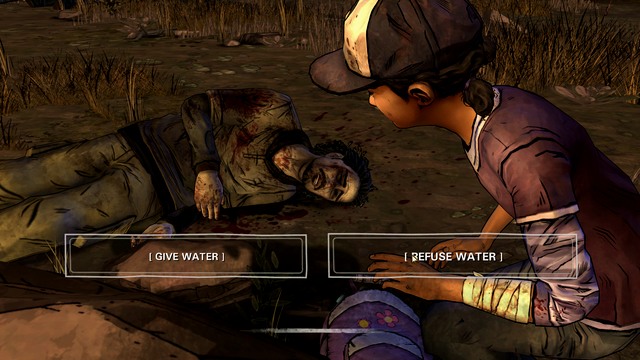
The choices or even the action that we do make us believe about the ominous outcome of the situation that we where put in and let us to believe that in the end… no choice is 100% good.
The future of Hypertext Fiction, to me, is a little bit unclear at this point. I do believe that Hypertext Fiction is a very well-known genre of storytelling that has the potential to go much further then it is at. For years hypertext Fiction has been growing in books as well as digital media but not necessarily in it’s own form but more of
“Instead of prospering as a specific genre in it’s own right, elements of hypertext have opened up new forms and genres. Complex multilinear narrative structures have for example become standard fare in long-term episodic television series.”
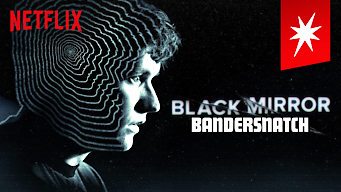
So in conclusion I do believe, in a literal sense, Hypertext Fiction can continue making a huge impact on all of us even if it’s in forms of other types of media but thanks to this program called Twine. everybody can bring there multilinear imaginations to life and expand as far as they want to go.
Sources:
Image caught from “Telltale’s The Walking Dead: Season Two”
Image caught from “Black Mirror: Bandersnatch”
Scott Rettberg’s “Electronic Literature”
Hypertext Fiction and “The Babysitter”
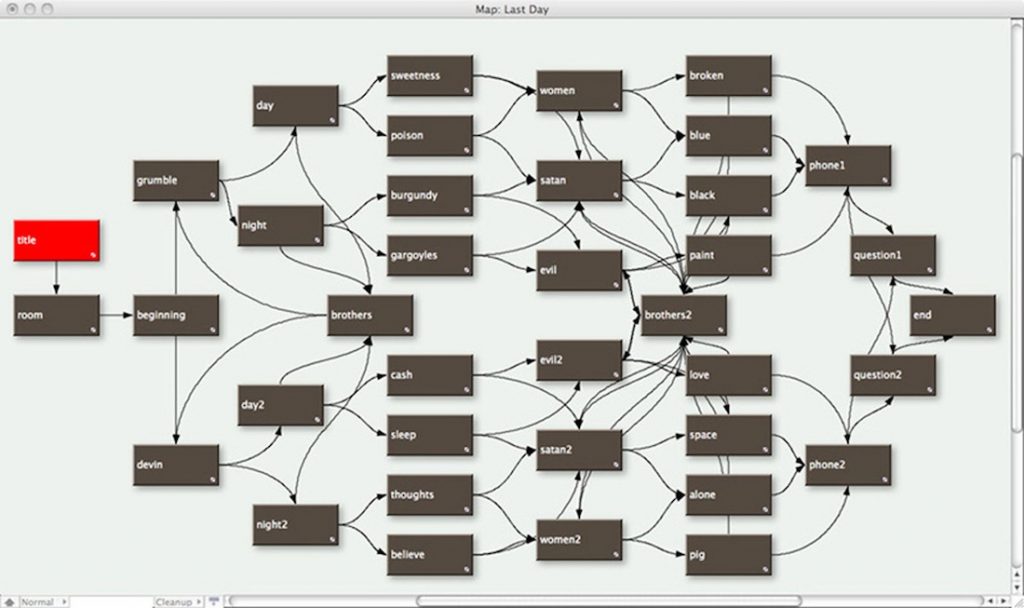
During the reading of Robert Coover’s “The Babysitter” I couldn’t help but feel just a little confused to the fact that So many things where happening at once I couldn’t necessarily keep track of who’s doing what. I felt like this should be a way not to use Hypertext Fiction because even though this opens up the story to more possibilities instead of just a singular, linear path, to me, I just could not follow so parts of the story.
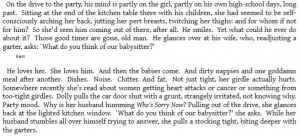
The definition of Hypertext Fiction, to me, is a great way to express a much broader and open storytelling experience for all of the readers by giving different conclusions just by the smallest decisions. Like in Scott Rettberg’s book “Electronic Literature”
“The development of hypertext fiction include a shift away from linear storytelling toward a multi-threaded approach”.
I still believe that this is Hypertext Fiction but it’s Hypertext Fiction that is still being developed, that is still trying to go into a different way than linear storytelling and instead gives us a lot of different perspectives that contributed to the ending in one way or another.
In conclusion, “The Babysitter” really does contributed well to the Hypertext Fiction category because, even if it is a little bit confusing at first, it still has those branching paths that make you think about what could possibly happen next.
Sources:
The Babysitter by Robert Coover
Electronic Literature by Scott Rettberg
Electronic Literature and Combinatory Writing
Entry #1
On this weeks entry I have encountered very interesting work named “Taroko Gorge” made by Nick Montfort and, with the help of such software like JavaScript, CSS and HTML, he was able to put together a very intriguing poem that displays keywords. I found this piece of work to be very interesting because other writers where able to pick up the same type of story-telling and make it their own just by changing a few words.

Another variation of this type of poem I read was “Taroko Gary” by Leonardo Flores. It was structured just like Montfort’s Taroko Gorge but the background really spoke to me. I felt like I was being taken on a quest to just observe the rainforest and the mountains. It reminded me of when I was a kid, going camping, and I would just love to go out and explore the landscape with phrases such as
“Rain coasting the creek.”
“Creek Stand.”
The technology behind this is really fascinating because the format of making poems like this one and “Taroko Gorge” is it looks like you put different variations of words in a div and you can see that the words get randomized to try and make very compelling poems and can really make you think about what sort of content that you can produce by knowing this sort of language.
Sources:
https://nickm.com/taroko_gorge/
http://academic.uprm.edu/flores/TarokoGary.html